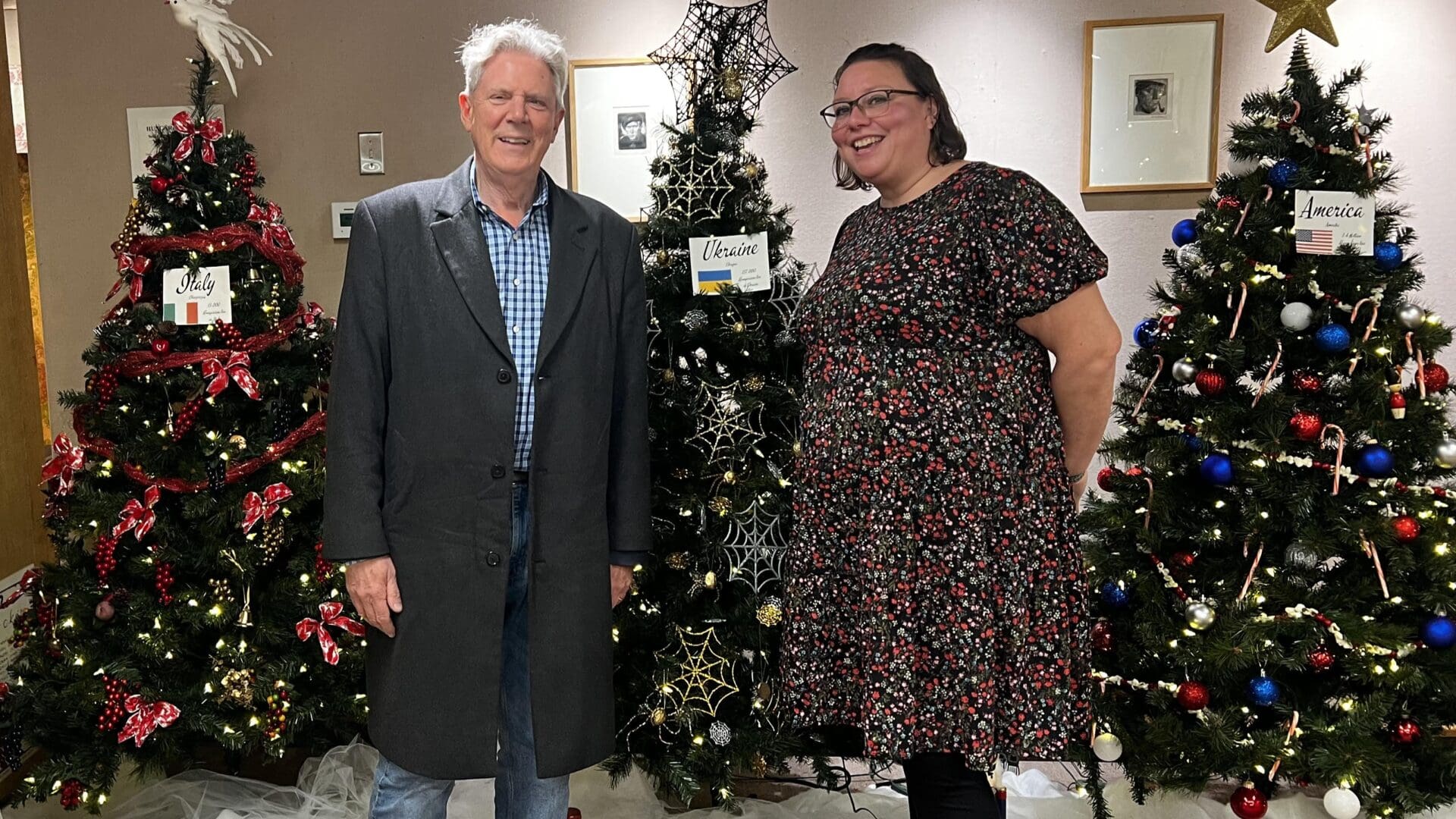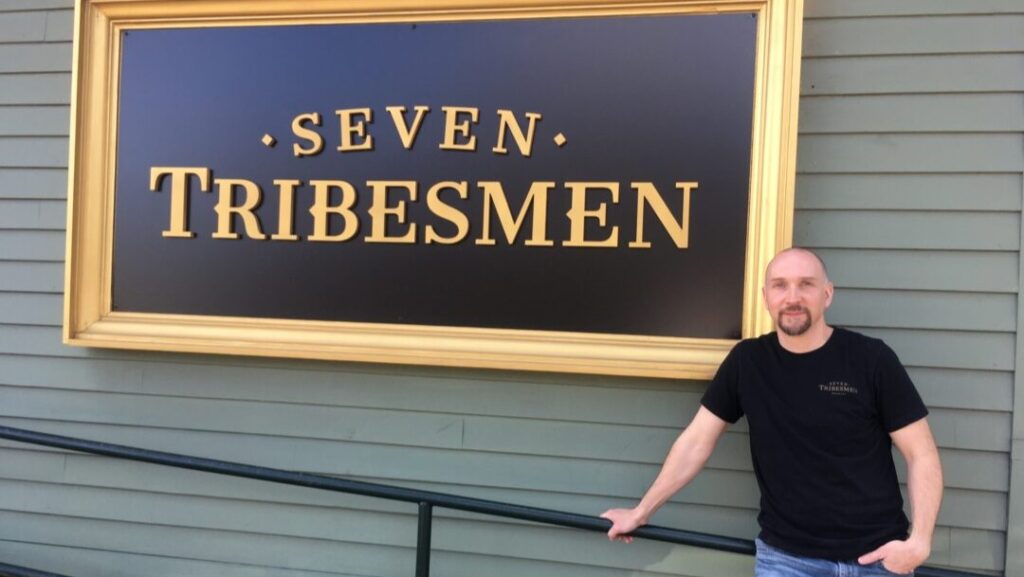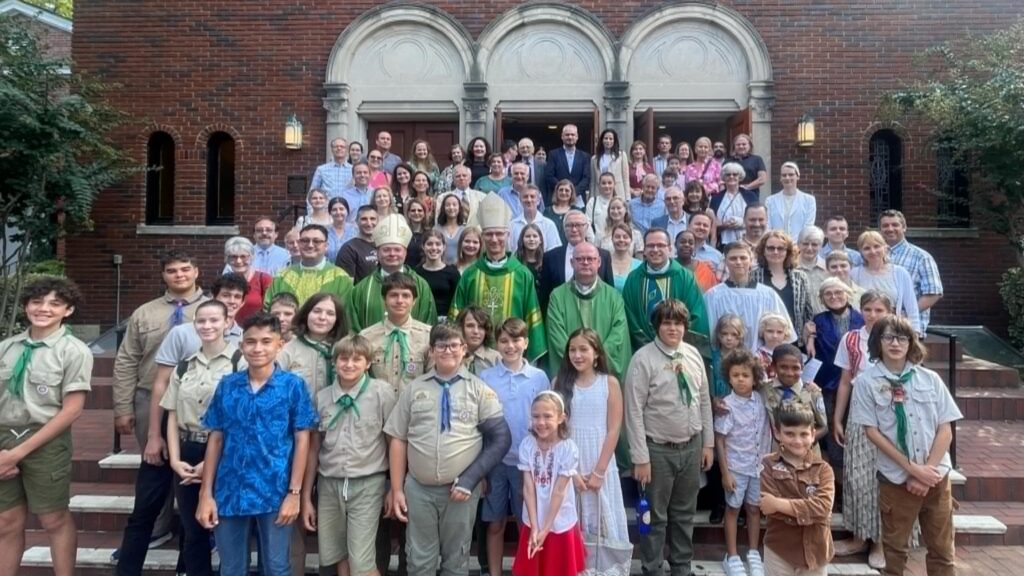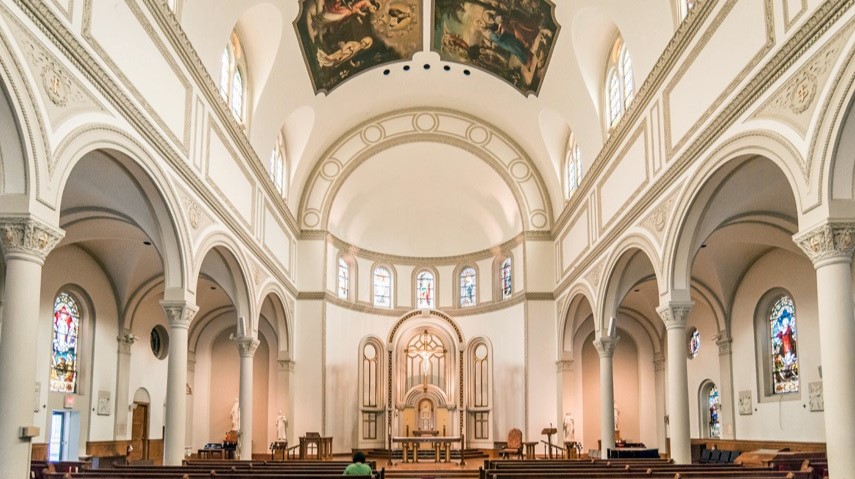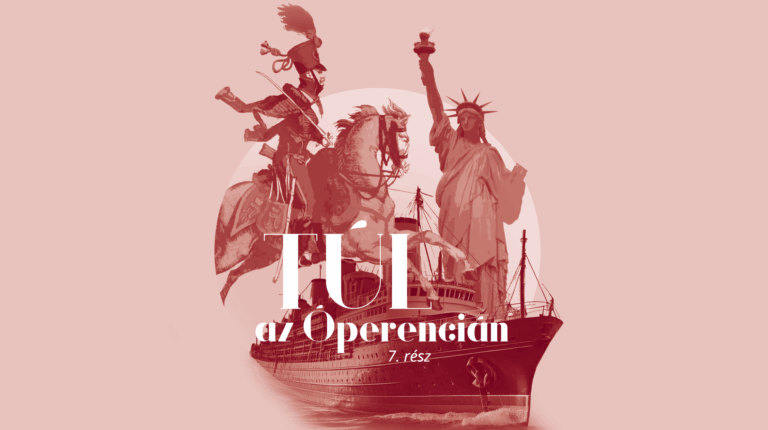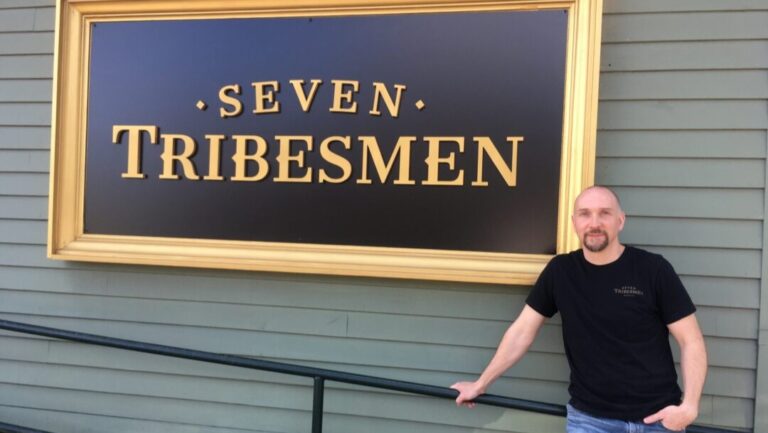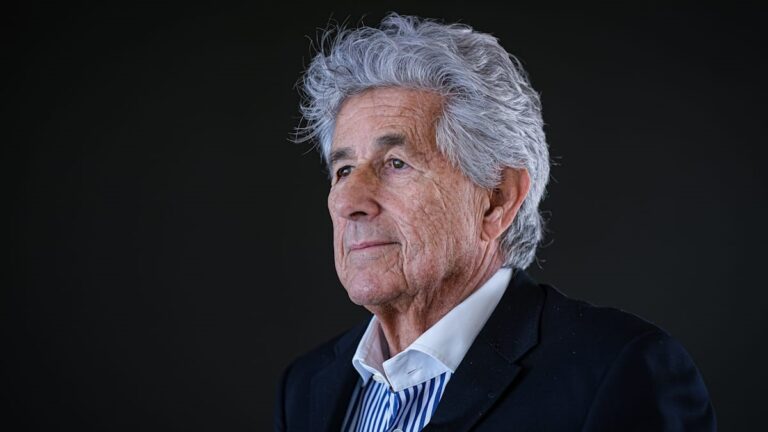Melissa Katkó Pepin believes AHF is not just a representation of Hungarian American achievements, but also a reflection of how she and others in and beyond the Hungarian community want to reconnect with their Hungarian heritage. AHF continuously builds connections with local communities and institutions and organizes the lion’s share of the official arrangements of the annual Hungarian Festival, which will take place on 1 June tis year.
***
Tell us about your childhood. You are a third generation Hungarian, right?
I grew up in the New Brunswick Hungarian community. My grandfather, József Katkó, arrived in 1950 and settled in Manville with his brother, and later brought my aunt and their daughter out of Hungary, too. My grandfather met my grandmother, Margaret here in NJ at a party and they married in 1953. My mom, Margaret (Margie) came along shortly after that, in 1954. My grandfather said my mother was first generation, and thus I’m second, but it really depends on how you look at it. Pepin is my biological father’s name, who is from Puerto Rico, but I was raised by my mother and stepfather, Paul Bodo, members of the congregation of the Magyar Reformed Church. We primarily spoke English at home and attended the English services as my grandfather accepted assimilation.
How did you get involved with AHF, commonly referred to as the ‘Hungarian Museum’?
When I was in kindergarten at St. Ladislaus, my godmother worked at AHF when it was located at 177 Somerset Street. After school, I would walk to her workplace and sit beside her desk and watch what was happening. When Professor August Molnár, the AHF President would come talk with me, I was always thinking: how could I become Professor Melissa? Later, when I was in college, my mother was working at AHF as a bookkeeper, and I would walk up Somerset Street after classes and visit her. And again, Professor Molnár would talk to me, and I would again wonder how much I want to become Professor Pepin. Later on, when Professor Molnár got older and planned to retire, he needed an office assistant. I had just finished my graduate studies at Rochester Institute of Technology and was working for the Magyar Reformed Church as an office administrator and community liaison. He called me in October 2014, asking whether I want to work for him when I’m not working for the church. I replied: ‘You know what, dear professor, what I really want is your job…’ I just threw it out there because I was so desperate to get a job during the recession. In December of the same year, he asked for my resume and hired me as Executive Director on 13 March 2015. I was given keys to a building I knew nothing about. I had to get in with my staff and make it my own. Nine years later, I think the Hungarian Museum is not just a representation of the Hungarian American achievements, but it’s also a reflection of me, how I want to reconnect with my Hungarian heritage, how other people in and even beyond the community want to find that piece of Hungarian in themselves to hold on to when they come to this building that is accessible to everyone because everything we do is bilingual. Everybody is welcome here, whether they are Hungarians or ‘just’ Hungarian supporters.
Besides your close relatives working here and being impressed by Professor Molnár’s title, what was your inner motivation to work at and for AHF?
I’m a printmaker and an artist. My degrees are in visual arts education and my master’s degrees in non-toxic art making. I have a real affinity for the art side of the organization. We have a very large collection from József Domján. He was primarily a woodblock printmaker who made his own pigments. I am primarily a printmaker who makes her own pigments. His were oil based and toxic, mine are soy based and non-toxic. So, there’s a lot of correlation between us. I love bringing in new exhibits. I love showcasing artists I found on Instagram or are a part of the community that needs to be showcased. I try to pick younger people who have an affinity to modern arts, using new technology and techniques, have an interesting backstory or a positive influence on the community they’re working in. We had a lovely exhibit called The Streets of Debrecen, one of New Brunswick’s Sister Cities. This has been photographer Victor Loki’s project for over three years, and we put his Instagram feed into our website. You can see the work we displayed here but also the new work he’s producing. It creates this kind of instant gratification where you can see the new art and the old art and what he’s working towards in the future. Everybody we showcase has some sort of Hungarian connection. We’ve showcased Tünde Hagymási and we are also a huge supporter of the artist Doaz, who grew up in the community with me. We were able to recommend him to the City Art’s Council as mural artist in New Brunswick, and his projects are really sprucing up the town and giving us something beautiful and positive to look at as you drive or walk through town. That’s another thing that I’m really proud of: we’re able to connect more Hungarian artists to the greater New Brunswick community.
You’re able to connect the museum itself to the greater New Brunswick community. How?
Since last December, I’ve been the president of Sister Cities in New Brunswick. It is a beautiful program where we get to exchange cultures and bring it home with us and bring some of the New Brunswick culture to the place that we’re visiting. The town has four Sister Cities: Fukui and Tsurouka in Japan, Limerick in Ireland, and Debrecen in Hungary. I have been to all of them on different delegations. Last spring we went to Limerick and this fall we went to Japan. In April, we sent a delegation of eight kids to Debrecen, and they had a blast. For some of them this was their only chance of going on an international trip, some of them have never even been outside of New Brunswick. We’ll also have visitors; for instance, for the Hungarian Festival, a delegation from Debrecen will come and be on stage. They can see and interact with our own folk-dance groups, our scouts and others in the community.
I also work in the Esperanza Neighborhood Project, the section of New Brunswick where the Museum is located, too. We opened AHF’s doors, lecture hall and courtyard to the neighborhood. We host meetings where we’re able to interact with the police and tell them what’s on our mind about the neighborhood. We’ve utilized our courtyard during the pandemic for food giveaways and mobile vaccination van. We now have Hungarian, Mexican and sometimes Polish kids to perform on our stage in the courtyard. It’s a way of getting them to interact, share their culture and heritage with each other. AHF also works with the Arts Council of New Brunswick, which I’m a member of. For a few years we’ve been hosting artist meet and greets and a community art exhibit every January called the Windows of Understanding project. It pairs up a working artist with a group of students and they make artwork based on some vital political or social issues. This, again, opens the building up to new people who walk by and say: the Hungarian Museum is a vital part of the community.
By the way, I finally got that professor title I wanted for so long. My students all call me Professor Pepin. I teach technical drawing at NJIT. It also gets AHF out there to a new group of people because I talk to my students about what I do here, and they find it interesting. When I mentioned the Hungarian Festival for 10-15,000 people, they all wanted to come…
Before talking about the Hungarian Festival, let’s turn to the less artistic and less modern part of the Museum: a big library and a huge number of archives undergoing digitization.
Since its founding in 1955, the AHF’s ongoing mission has been to communicate the story of Hungarian Americans through the Hungary Heritage Center which is the only facility of its type offering archives, a museum and library in the U.S. Our library is the largest collection of books about everything Hungarian: we have over 40,000 books in our collection. We’re a satellite library of Rutgers University, and we’re searchable through them, i.e. all our books get cataloged through Rutgers. We are a scholarly library; we don’t really have novels. We get some donations of Danielle Steele-style pulp translated into Hungarian which we put in the museum store for a dollar each. We try to encourage this kind of sharing, but our main focus is on the scholars utilizing the library. We have Fulbright scholars coming specifically for books printed in the U.S. in Hungarian during communism, but never released in Hungary.
We have an extensive and diverse archive of rare books, manuscripts, and other documents of historical significance. Our archive has about 12 million pages of ephemera. Three million of them have already been digitized through Arcanum, and searchable through our website in both languages as the metadata for our digital archive is bilingual. These include 10,000 Hungarian American newspapers, various journals from different churches and community institutions. Our next big project is to digitize some of the more individual archives: people’s journals, ephemera, awards, etc. Finally, we also have one of the largest folk collections in the US, rotated in and out of our museum. During the Covid pandemic, we revamped our permanent collection, taking it from about 200 to 1,000 square feet.
What events do you organize or host, aside from the Hungarian Festival?
We have many different events. We have an annual Festival of Trees. Last year we hosted the 35th annual with 43 trees. Over time, I’ve cultivated it to be a hybrid exhibit, so we have trees in our building, and in downtown New Brunswick. There are not only Hungarian trees, but from all over the world. Last year, the New Brunswick Police Department and Fire Department both had trees. We’re thus bringing in new friends to the organization. They see what we’re doing and then invite us to their events, and I get to see what they’re doing. We also host workshops, such as embroidery and gingerbread cookies. We have our monthly Hungarian Artisan Market, which stems from a conversation with József Hirs, the well-known Hungarian butcher after losing our last permanent Hungarian butcher shop in town in 2015 which was a vital part of the community. When we first hosted Hirs in the courtyard, the line was wrapped around our parking lot. Once the butcher popped up, the Kürtőskalács truck and later the Papp-rika truck also began attending. We now have from eight to 12 vendors such as Magyar Apparel, Eurodough, Mannasüti. It bridges the gap between the community and the festival: the same people come month after month to interact with their culture and heritage and get a piece of their soul filled with what they were lacking before.
Their soul and their stomach… Do those who come for the food pay a visit to the other parts of AHF? In other words: is it appropriate to have food regularly sold in a museum?
I recommend visiting the market to everybody. Once we started working with Seven Tribesmen brewery, we had to change the flow of how people entered the building. Everybody is greeted at the front door by me or a board member, and if someone randomly walks through the main door, we immediately approach and try to (re)introduce them to the Museum and the community. This is how we reach a lot of new people. We filter them through the Museum and its store since all the food trucks are at the back of the courtyard. Thus, they also interact with the exhibits. We get all kinds of people and families, not only Hungarians, but Polish, African Americans, Chinese people. Going back to events, we just had a Hungarian Heritage Night at Somerset Patriots Stadium last weekend. We are also a polling center for the community. We also rent out our lecture hall as a meeting space and the ladies of the local Hungarian Scout Troop use our building on Friday nights. At a couple of evenings in each month, AHF is utilized by all different organizations from the community.
What about the Hungarian Festival?
There are three organizations that are the cornerstone organizations and financially support the Hungarian Festival: the Hungarian American Athletic Club, the Magyar Reformed Church and the local Hungarian Scouts. They are the ones cooking the bulk food: töltött káposzta, kolbász, gulyás, palacsinta. AHF participates in other ways. We don’t have an industrial kitchen. We set up the Budapest Cafe in our courtyard and serve pastry from noon onwards, we host the Twilight concert and an exhibit. This year, we’re featuring the Széchenyi Hungarian School and Kindergarten; we’re hosting their 50th anniversary exhibit in the gallery. The $1 book fair, the embroidery fair and a children’s book fair will be in the gallery. So, at AHF we do not cook but very much appreciate the role of the gastronomy. After a two-year hiatus due to COVID, I wanted a really good slogan for the event; something like: come to the festival as an American and leave as a Hungarian. Because it’s so true. When I cook something so simple as gulyás or csirkepaprikás for friends and acquaintances, they all find it amazing. My half-sister from the Puerto Rican side of my family is obsessed with my creations. Food brings people together. As you can see during the festival, people want their lángos and other Hungarian food. You also see them dancing in the streets, appreciating what it means to be Hungarian and how vibrant our community still is after all these years. Because some communities have such a hard time retaining their space and people. Luckily for us, the city of New Brunswick, Mayor Cahill has always been on our side when it comes to preserving our culture. He wants the Hungarian community to thrive as much as possible.
AHF also does a lot of official background work for the Festival, is that right?
AHF is an umbrella organization and the liaison with the city and the county. The City Council approves all the street closures, the use of police and public works. We also deal with the parks department, the big stage that comes, all the towing and getting everything set before the festival. I start working on the day of the festival at 5:00 am, watching the tow trucks come, the vendors start arriving around 6:00 am, and the stage arrives by 7:00 am. The streets close at 8:00 am. AHF works with all the insurance companies that insure the event as well. There’s a lot of background work and paperwork behind everything. We start the preparations in January and push through all the way until the festival morning when I give the first speech. The AHF closes the festival with our Twilight concert, this year with a special guest violinist Bernadett Nyári. It’s a very long day, but it’s lovely to see people coming from Delaware, Western Pennsylvania, Connecticut and even Toronto, Canada. Next year will be the 50th anniversary – we are the longest and one of the largest running festivals in Middlesex County. The Ohio Hungarian festival might be a few years older, but over time they changed it from a purely Hungarian to an international festival, inviting other cultures to participate. We really strive to keep this as Hungarian as possible. We have a couple of non-Hungarian food vendors that we’ve made friends with over the years. For example, Mozzarella comes out with their taco truck, usually closer to AHF, where this neighborhood can come out and participate, but otherwise we really try to keep it Hungarian. Everybody knows that on the first Saturday in June, the Hungarians are coming out in mass, so they are ready for the gridlock traffic and no parking and enjoying the sights and smells of the day.
You mentioned standing at the door and greeting people. At the recent AHEA conference, you collected garbage after dinner. Is this also part of your job? Don’t you have a team?
I’m the Executive Director, but I also know that if there’s garbage, somebody must take it out. Similarly, I’m six feet tall, so if something in the back or on the top needs to be reached, I do it. When I was locked in the elevator once, the repairman showed me how to fix the elevator if I ever got stuck in it again. I am the chief bottle washer or the brain, the archivist, the curator when needed. I wear all these hats. Sometimes I feel like being the mayor. (laughs) Since I’m approachable, everybody feels they know me from different events in town. For some, I even became the face of the Hungarian community in New Brunswick. It comes along with my job, I go with it and try my hardest to always be totally transparent. I have my business card and our events calendar with me all the time. I have a team: Chilla Varga is our office administrator Kamilla Kocsis is our librarian and archivist, Bence Kalán and Gergő Vajtay do the dirty work, moving and setting up things. We are a small family, we look out for each other and I try to keep a very open and positive work environment.
You are promoting cooperation also within the Hungarian diaspora, since AHF is an active member of the Hungarian American Coalition (HAC).
I’m the chair of their Museum and Libraries Committee. We try to meet up quarterly. There are so many small Hungarian libraries across the country, like in the Kossuth House in DC, or the Hungarian House in New York or in the Orly Museum in California. Not everybody knows that there are smaller systems of cataloging available online to nonprofits that are very cheap, under $75 per year. If I can lead a library into being able to catalog and get their books into rotation, it’s wonderful. We should be sharing exhibits with various museums, utilizing each other’s collections. We should talk much more about grants. Last year, we got a half a million dollar grant to replace our HVAC system and a $125,000 grant to replace all the lights in the building. These are things that every organization needs access to and it’s about hitting it at the right time and cultivating what you need to fit the parameters of the grant. Middlesex County is a huge supporter of our organization, contributing about 20 percent of our budget every year. But besides grants, we are a fully donation funded organization. We have our annual fundraiser Gala. Last month it was our 57th annual Gala and was very well attended. We honored Gabi Vajtay with our Distinguished Service Award and Reconnect Hungary led by her with our Lincoln Award. We always have donation jars around the Museum. At the Hungarian Heritage Night last weekend, we put the donation jar out and said, we can only continue doing this through people’s support. We also ask for support for digitizing our archives. We participate in Giving Tuesday, the Tuesday after Thanksgiving. If we have a board member who works for a bigger company, we try to ask for corporate matching. We sell things in the museum store. Vendors of the monthly Hungarian artisan market pay a certain rental fee. It’s a small amount, but every little bit help
Related articles:

